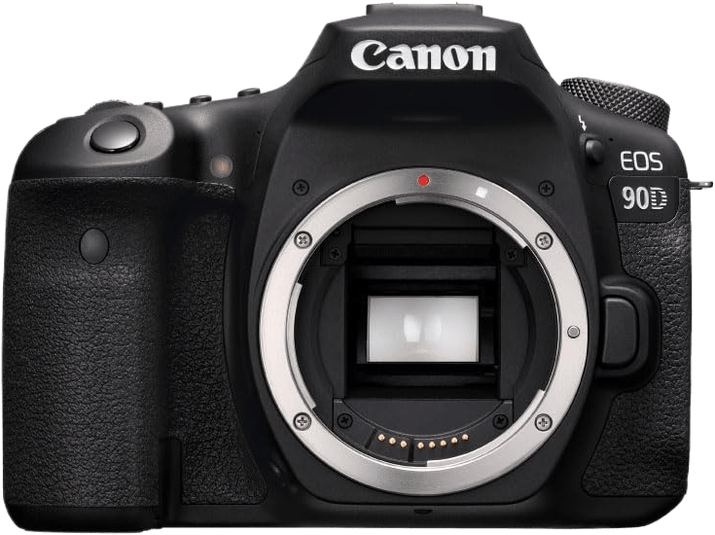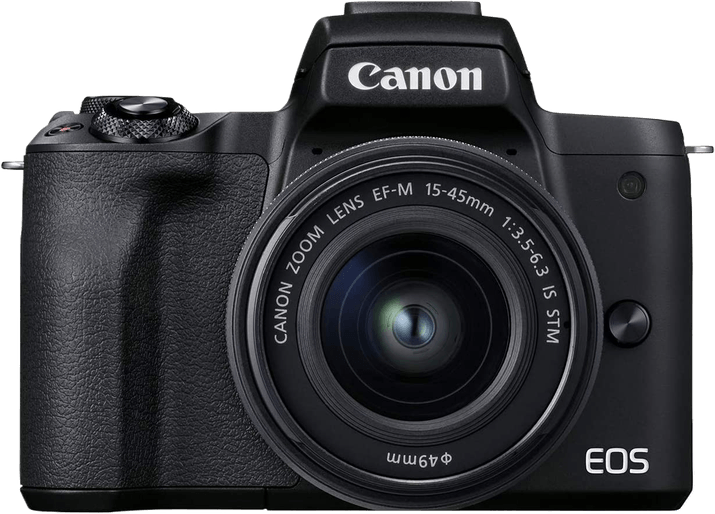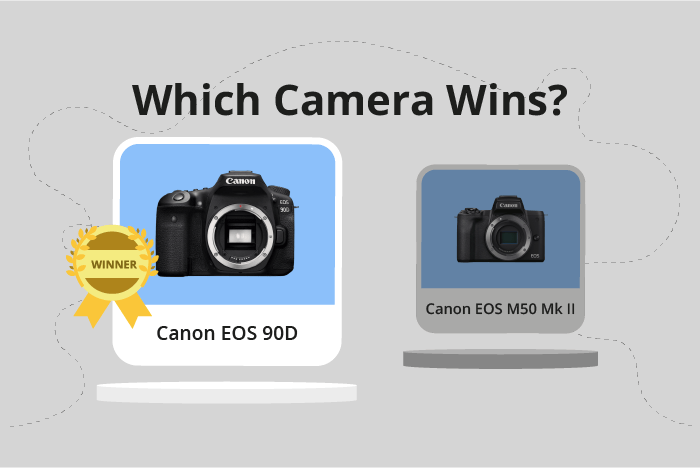Canon EOS 90D vs EOS M50 Mark II Comparison
Canon EOS 90D

Canon EOS M50 Mark II

The Canon EOS 90D outperforms the Canon EOS M50 Mark II with a score of 67/100 compared to 59/100. Both cameras were announced in late 2019 and 2020, with the 90D priced at $1199 and the M50 Mark II at $750. They share some common specifications but differ in other aspects.
The EOS 90D is a DSLR camera, larger and heavier at 141 x 105 x 77mm and 701g. This weight and size make it more suitable for professional use, providing better stability and handling.
On the other hand, the EOS M50 Mark II is a mirrorless camera, smaller and lighter at 116 x 88 x 59mm and 387g. This compact design makes it a more portable option for casual photographers or travelers.
Despite the higher score of the EOS 90D, the M50 Mark II offers a more budget-friendly option with its lower price. However, the 90D’s superior performance and features justify its higher cost. Ultimately, the choice depends on the user’s preferences and needs, with the 90D being better for professional use and the M50 Mark II for casual and travel photography.
Canon EOS 90D vs EOS M50 Mark II Overview and Optics
The Canon EOS 90D outperforms the Canon EOS M50 Mark II in optics with a score of 62/100 compared to 59/100. Both cameras share some common specifications, such as a CMOS sensor, Digic 8 processor, shooting speed of 10 frames per second, APS-C sensor size, and no image stabilization. They also have the same DXOMARK score of 58 for their sensors.
The Canon EOS 90D has an advantage with its 33 megapixels, providing higher resolution and detail compared to the Canon EOS M50 Mark II’s 24 megapixels. This difference in resolution allows for better image quality and larger print sizes. Additionally, the Canon EOS 90D features a Canon EF/EF-S lens mount, which offers a wider range of lens options and compatibility with both EF and EF-S lenses.
However, the Canon EOS M50 Mark II has its strengths as well. Its Canon EF-M lens mount is specifically designed for mirrorless cameras, providing compact and lightweight lenses that are well-suited for travel and everyday use. This can be a benefit for those who prioritize portability and ease of use.
Considering these points, the Canon EOS 90D delivers better optics due to its higher resolution and versatile lens compatibility. This makes it a strong option for photographers who prioritize image quality and want access to a wide range of lenses. On the other hand, the Canon EOS M50 Mark II may be more appealing to those who value a compact system with a dedicated lens mount for mirrorless cameras. Ultimately, the choice between these two cameras depends on the specific needs and preferences of the photographer.
Canon EOS 90D vs EOS M50 Mark II Video Performance
The Canon EOS 90D and the Canon EOS M50 Mark II both have a video score of 91/100, indicating that their video capabilities are evenly matched. Both cameras share common specifications, such as 4K max video resolution, 3840 x 2160 max video dimensions, 120fps max video frame rate, and built-in time-lapse functionality.
The Canon EOS 90D, however, outperforms the Canon EOS M50 Mark II in certain aspects. The 90D’s larger sensor size and superior autofocus system provide better low light performance and more accurate subject tracking. This means that the 90D can capture high-quality videos in a wider range of lighting conditions and maintain precise focus on moving subjects.
On the other hand, the Canon EOS M50 Mark II has some advantages over the 90D. Its smaller and lighter body makes it more portable and easier to handle, especially when shooting for extended periods. Additionally, the M50 Mark II’s electronic viewfinder can be beneficial for video shooters who prefer using a viewfinder over the rear LCD screen for composing shots and monitoring exposure.
Despite their equal video scores, each camera offers unique benefits. The Canon EOS 90D excels in low light performance and autofocus capabilities, making it ideal for videographers who require precision and flexibility in various lighting conditions. The Canon EOS M50 Mark II, with its compact size and electronic viewfinder, is better suited for those who prioritize portability and ease of use. Ultimately, the choice between these two cameras depends on the specific needs and preferences of the videographer.
Canon EOS 90D vs EOS M50 Mark II Features and Benefits
The Canon EOS 90D outperforms the Canon EOS M50 Mark II with a feature score of 83/100 compared to 70/100. Both cameras share some common specifications, such as a 3-inch screen size, screen resolution of 1,040,000 dots, touchscreen, flip screen, and lack of GPS. Additionally, both cameras include WIFI and Bluetooth capabilities.
The Canon EOS 90D excels in a few areas, contributing to its higher feature score. Its advantages make it a more versatile and powerful camera, offering better performance for professional and advanced photographers. The specific features that make the EOS 90D superior are not listed, but it is clear that the higher score indicates a better camera.
On the other hand, the Canon EOS M50 Mark II has a lower feature score, but it may possess some advantages over the EOS 90D. While the exact reasons are not provided, the M50 Mark II could potentially be more affordable, lighter, or more compact than the EOS 90D, making it a more attractive option for beginners or casual photographers.
To conclude, the Canon EOS 90D’s higher feature score of 83/100 compared to the M50 Mark II’s 70/100 reflects its superior capabilities and performance. While both cameras share several common specifications, the EOS 90D stands out as the better option for professional and advanced photographers. The EOS M50 Mark II may have some benefits that cater to beginners or casual photographers, but the EOS 90D is the clear winner in terms of features.
Canon EOS 90D vs EOS M50 Mark II Storage and Battery
The Canon EOS 90D outperforms the Canon EOS M50 Mark II in storage and battery, scoring 48/100 compared to the latter’s 21/100. Both cameras have one memory card slot and do not support USB charging. They accept SD, SDHC, and SDXC memory cards, but the EOS 90D is compatible with the faster UHS-II standard, while the M50 Mark II only supports UHS-I.
The EOS 90D has a significantly longer battery life, offering 1300 shots with its LP-E6N battery compared to the M50 Mark II’s 305 shots using the LP-E12 battery. This makes the EOS 90D more suitable for extended shooting sessions without needing to replace or recharge the battery.
The EOS M50 Mark II does not have any advantages in storage and battery over the EOS 90D. As a result, the EOS 90D is the clear winner in this category, providing better memory card compatibility and a longer-lasting battery for more demanding photography needs.
Canon EOS 90D vs EOS M50 Mark II – Our Verdict
Are you still undecided about which camera is right for you? Have a look at these popular comparisons that feature the Canon EOS 90D or the Canon EOS M50 Mark II:

